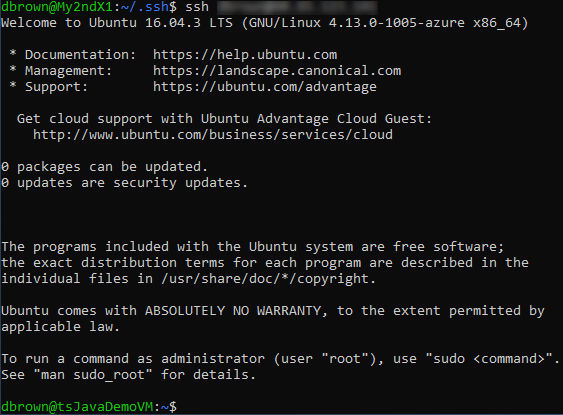
Security find-generic-password -l password-item-label -g 2>&1 1>/dev/null | cut -d'"' -f2 You can use security to read from your keychain instead, like this: #!/usr/bin/env bash
#Ssh copy id mac os x password
In this case, we just skipped the window, returning the password from our program. This is intended to be used in graphical environments, so that a window can pop up asking for your password. When there is no tty, but SSH_ASKPASS and DISPLAY (for X11, set by default) are set, SSH executes the program specified by SSH_ASKPASS and uses its output as password. Then, set the SSH_ASKPASS environment variable to the path to this program, and then run ssh in the Automator action, like this: export SSH_ASKPASS=/Users/danielbeck/pwd.sh the following bash script you need to make executable using chmod +x pwd.sh: #!/usr/bin/env bash You need to create a program that when called prints the password to standard out, e.g. as part of a Run Shell Script action in Automator. If you don't need to have an interactive session on the remote server, you can execute ssh in an environment without tty, e.g. The scheme I use in keychain looks like this.Is there anyway I can login to this server without having to enter the password every time? Ssh_askpass: exec(/usr/libexec/ssh-askpass): No such file or directory

However when I try to run it ssh exits with the following error: ssh_askpass: exec(/usr/libexec/ssh-askpass): No such file or directory Now I can retrieve the password automatically from the keychain using /usr/bin/security, however I can't find a way to send this password to the ssh prompt. I have added the passwords to the OS X keychain.

And I don't want to type the passwords every time. And it keeps getting better every few weeks or months.I need to login to an ssh server which doesn't support key based authentication. (It's possible Terminal does some of the things I mention here-it's been so long since I've used it that I don't recall, but when I switched I paid close attention to the differences and there were lots of advantages to iTerm. I've been using it for years now and have never missed Terminal. Development is pretty active, but documentation seems to lag behind. Some are mentioned here but some are not, such as co-processes, triggers,smart selection, semantic history, and so on.




 0 kommentar(er)
0 kommentar(er)
